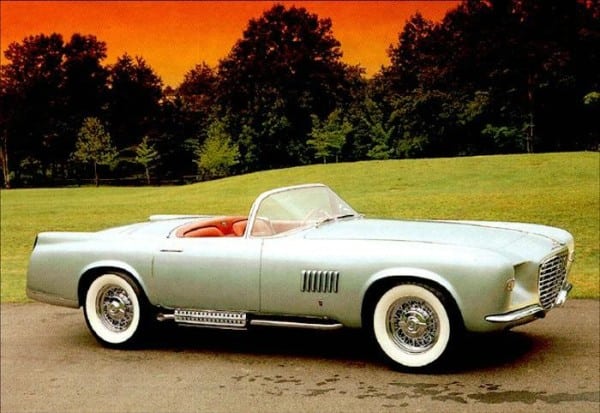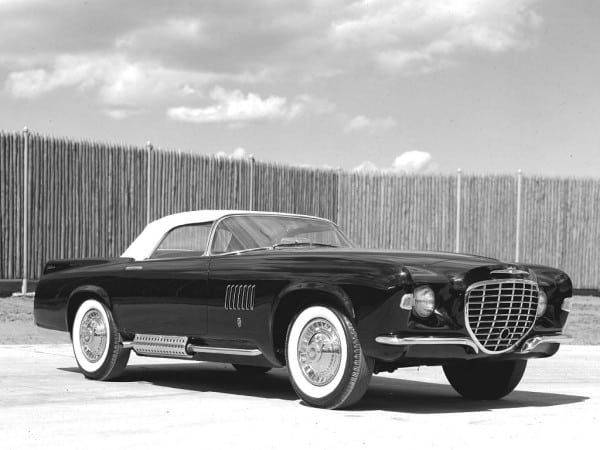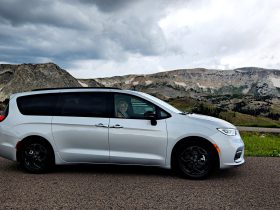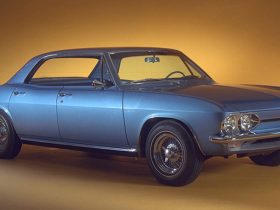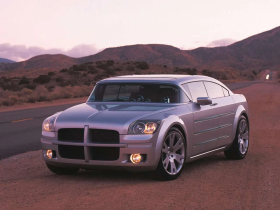The Chrysler Falcon was a concept that the notorious Virgil Exner conceived of as an “everyman’s car” to compete with the Ford Thunderbird and Chevrolet Corvette without being an expensive vehicle. The Falcon was meant to be something in between a sports car and a daily driver. Exner designed the specifications in 1952-53 and the Italians at Ghia completed the bodywork design in 1954.
When shown in 1955, the Chrysler Falcon was meant to be a pre-production prototype and nothing about the car was fanciful or unrealistic, although it was labeled as the company’s latest in the Forward Look line of show cars. Everything was ready for the production line, but disagreements between the Design and Engineering departments at Chrysler kept the car from ever entering production. Management and Engineering argued that they already had the 1956 Chrysler 300 and Dodge D-500 coming, so another sports car would be redundant. Mostly, however, the issue was about curbing the growing power Exner was exuding over the company’s direction.
Despite it’s “ready to build” design, the Chrysler Falcon was an innovative car for the time. Sadly, however, the Falcon name was eventually to label a small, boring sedan from Ford instead of a beautiful car from Chrysler.
Design of the Falcon
Exner specified the Chrysler Falcon concept would be built on the company’s 105-inch wheelbase (109-inch chassis) using the manufacturer’s A-Bodies line (the “Valiant Family”). Originally, the Falcon was to be a Plymouth, but management moved the concept to the Chrysler nameplate for marketing reasons. When clay models arrived at Chrysler HQ, Exner knew he was on to something.
The final design of the Chrysler Falcon stood only 51.2 inches high and was one of the very few concepts Exner worked on that he named himself. Despite its short height and wheelbase, the Falcon totaled 182 inches in length, giving it a long, low appeal.
The Falcon is beautiful from all angles. The Alfa-like base-shaped grille with grid lattice work and Chrysler Crown above is beset by the inset headlamp bezels and jutting fender curves. A simple, European mustachio fender curls across the bottom of the vehicle’s face.
From the side, the fender runs across to begin curving downwards when it meets the door and the belt line follows through to a gentle downward slope underneath the rear quarter. Simple flares around the wheel wells gives visual note while the seven vertical gill-slits hint at power underneath the beauty. Exposed exhausts replace running boards across the bottom of the doors.
The hood furthers the European appeal, having the gently rounded look of a classic estate sloop. The one-piece curved windshield adds more class and its stainless steel edging smooths into the rag top which can fold away out of sight behind the seats.
Everything about the look and feel of the Chrysler Falcon is elegant and sporty. For 1955, it was a beautiful blend of European styling and American automotive.
Under the Hood and Behind the Dash
The Chrysler Falcon was originally billed as having a 331 Hemi, but that changed to a 276 cubic inch overhead valve V8 instead. Later, it was learned that both engines were actually used.
Still, that smaller 276 engine puts out 170 horsepower and 255 lb-ft of torque and was mated to a two-speed PowerFlite automatic transmission. On a vehicle weighing only 3,300 pounds, this meant very impressive performance.
All of the controls, outside of the steering and pedals, were operated using a short series of levers in four instruments on the lower dash. This made the dashboard very simple and elegant, giving for a sporty feel to the two-seat interior.
Where Is It Now?
For a long time, it was believed that only one conceptual was built for the Chrysler Falcon. That contains the 331 Hemi and was owned by Joe Bortz and is now in the Ford Museum, but it is markedly different from the original photographs of the Falcon from its auto show appearances in 1955. It has wider spacing between the fender louvers, a somewhat different front grille and hood face, and other small points of note.
The Falcon that appears in the 1956 film Four Girls In Town is identical to the photographs from auto shows of the period.
A third was also built, but its whereabouts are not known. It is known to exist only because a letter from Luigi Serge of Ghia to C.B. Thomas of Chrysler confirms three A-Bodied cars as Chrysler Sports Roadster models (Model A-488), two being identical and the third being a “DeSoto Sports Roadster” (Model A-489). It’s possible that this third is the Bortz car. As an interesting note, that letter also confirms the price for Ghia to build the cars: $20,000 plus $2,500 for mechanicals on the first, the same on the second minus 25%, and $16,000 on the third and $15,000 for a monocoque frame.
Regardless, the Chrysler Falcon was and is a beautiful example of form styling, using shape and contour instead of glitz and accouterments to create timeless styling. It would be as elegant on the road today as it would have been in 1955, something few vehicles can truly claim.




